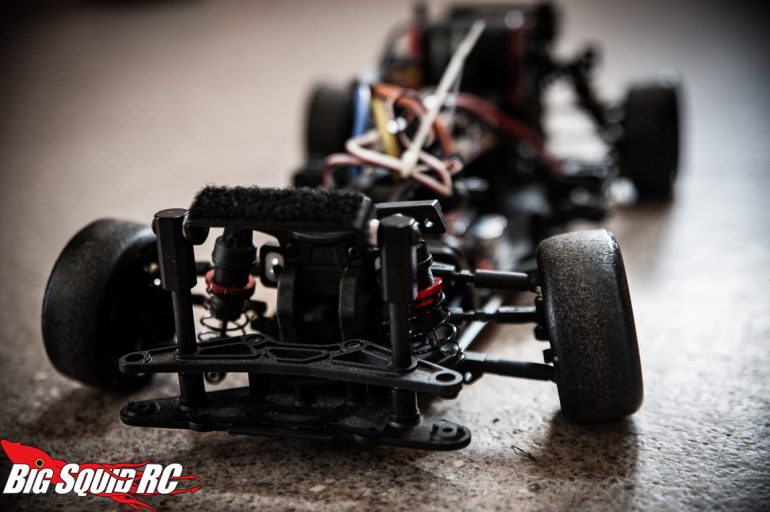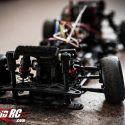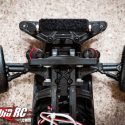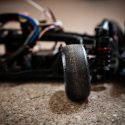Losing grip – turn that buckle!
It is highly likely that one of today’s readers, is a first time visitor to BigSquidRC. Or, at least, a first time reader of one of my columns. Welcome! RC is a great hobby with lots to explore, and RC drifting is a most fascinating niche in which to lose oneself. Easy to get into, easy to find good places to drift, and very few broken parts – in short, lots of bang for your buck.
Drifting is also a niche with a lot of technical depth to it. This can be comfortably ignored, but I think that most people who start drifting, will soon start to make adjustments on their car. I was never much of a tuner back in the days when I mostly did bashing and crawling – I just couldn’t be bothered experimenting with steering geometry, and didn’t really see any need to get into it. Why spend time tuning, when I could spend time driving?
Quick answer: it takes but a couple of minutes to make adjustments of camber and toe, and these minutes can have a big impact on how the car behaves. Therefore: if you haven’t ever turned your turnbuckles, please do! It is a very rewarding experience.
But which way to turn which turnbuckle, and why? For a lot of you, this is familiar ground, but it’s certainly not to everyone, so bear with me.
A good place to start would be the top front turnbuckle, to adjust your camber angle. Now, please enjoy my 25-cent lesson on the subject. Camber is the angle of the wheels, as seen when viewed from the front or rear of the car. If the top of the wheel leans towards the center of the car, that’s negative camber, and vice versa. Now grab a quarter (I told you it was a 25-cent lesson), and roll it on a table. It will shortly start to lean, and when it leans, the coin will turn in the direction of the lean. This aptly illustrates what camber does (albeit not why, I know) – it stabilizes the car in the direction the wheels are leaning (and thanks to caster, that will be in the direction the wheels are turning. More on that later).
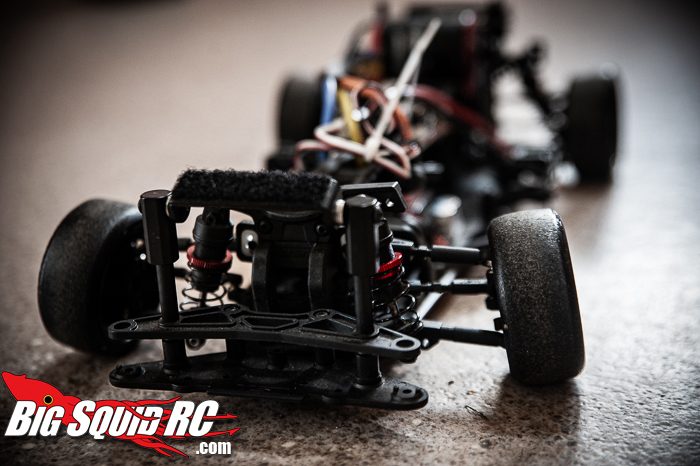
Negative camber is very evident in the picture above. Steering is at neutral.
During a drift, when you counter steer, negative camber helps to prevent the rear from overtaking the front, something which would cause the car to spin. Hence, if your car tends to oversteer (possibly culminating in a spin), you should try increased negative camber. If, on the other hand, it’s not the rear of the car that hits the outer sidewall, but the front, then the car is understeering. Less negative camber is the way to go.
When you adjust camber, be aware you will have to adjust toe as well. Toe is the direction the wheels are pointing when viewed from above; if they point outwards, that’s (duh…) toe out. Since the front steering knuckle is essentially a triangle attached to the car by a horizontal rod in each corner, if you change the length of one rod, the others are affected to. If you decrease your negative camber – wheels closer to vertical – by shortening the top turnbuckle, the wheels will point more outwards, and this will affect both turning and acceleration characteristics.
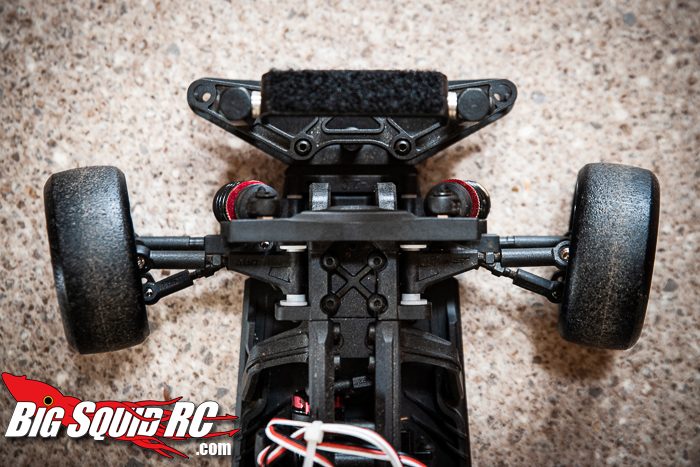
Plenty of toe out here. As you can imagine, this effects acceleration quite a bit. And ackerman, but that’s for another day.
Finally, a lollipop stick lesson on caster. In order to understand caster, you need to attach one end of a lollipop stick to the previously used quarter. Hold on to the other end of the stick and push the coin forwards, pretending it is one of the front wheels of a car. Looking at the coin from straight behind, you will see that it is vertical, camber is zero degrees. Then twist the stick to the right, as if it was a steering wheel, and do a right turn. You will find that since the stick was leaning when you pushed the coin forwards, your “wheel” now leans into the turn. Voilà! A neutral camber has turned into a positive one, the wheel is leaning in the direction of the turn. Caster is the angle of the lollipop stick when viewed from the side, usually 4 to 10 degrees, and as the wheels turn this angle changes the negative camber of the tire that is leading the car in a drift, into positive – stabilizing the car and preventing a spin. Very clever. On most drift cars adjusted by sliding the front upper or lower arm back or forth, which is a quite bit more complicated than adjusting camber.
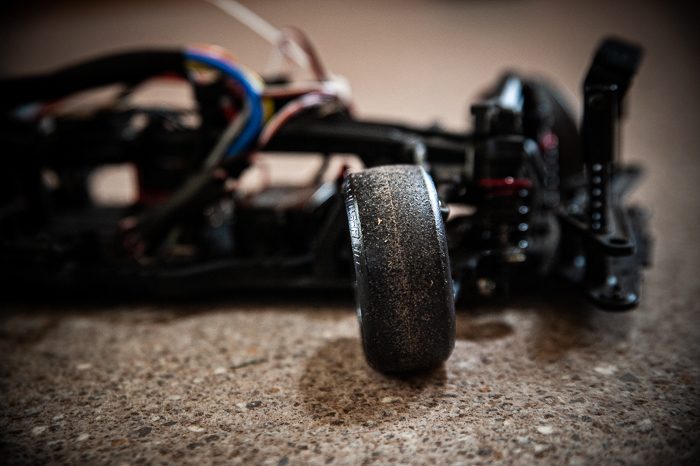
Tadaa! Thanks to the caster angle, a negative camber has turned into a positive as the wheel is turned.
By now, I hope I have inspired some of you to grab a turnbuckle wrench, turn some buckles and see what happens. It is worth doing rather big adjustments to begin, since this makes it easier to pick up upon what in the car’s behaviour has changed, and then adjusting back as needed.
Now, keep losing that grip!
Was this the first time you read one of my columns? If so, hit this link for some more!

